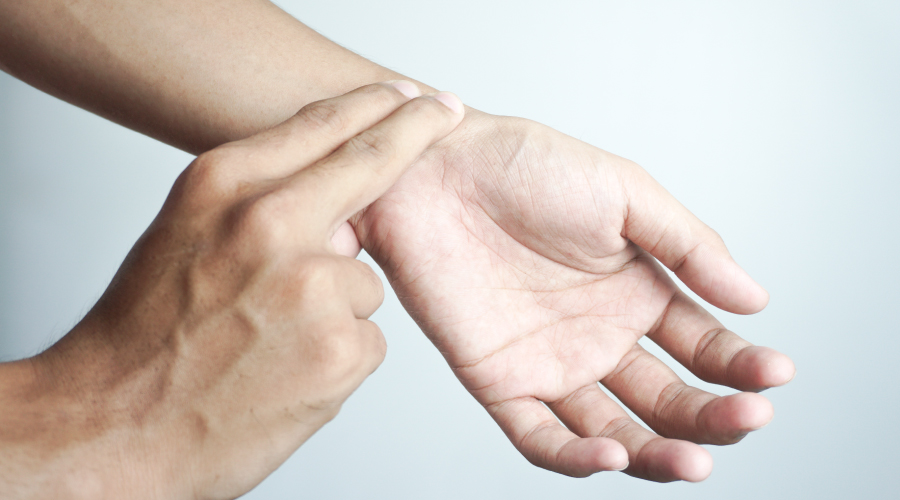Heart rate is the number of times the heart beats per minute. It is an indication of overall health, fitness level, and potential cardiovascular issues. The average heart rate for adults, also known as the resting heart rate, typically ranges between 60 and 100 beats. But this depends upon a series of factors including age, fitness level, and overall health. Let’s understand the normal pulse rate for women versus men and the factors affecting it.
Normal Pulse Rate for Women Vs Men
The normal pulse rate for women tends to be higher than for men. While the normal heart rate for both genders is between 60 and 100 beats per minute at rest, the average heart rate for adult women is 78 to 82 beats per minute as compared to 70 to 72 beats per minute for average heart rate in adult men.
This difference in average heart rate is because of the difference in the size of the heart. As a male body enters puberty, it experiences a growth spurt. The heart size also increases corresponding to the overall increase in body size.
On the other hand, a woman’s body is smaller than a man’s. Therefore, the size of the heart is also smaller. The smaller heart thus needs to beat faster to pump the same volume of blood, hence a higher heart rate.
Low Vs High Heart Rate
In general, a lower resting heart rate is often considered a sign of good cardiovascular health and fitness. It indicates that the heart is efficiently pumping blood and doesn’t have to work as hard at rest. Highly trained athletes often have lower resting heart rates due to their cardiovascular conditioning.
However, it’s important to note that what constitutes a ‘normal’ or ‘healthy’ heart rate can vary among individuals. Factors such as age, fitness level, medications, and overall health affect heart rate. Thus, some women may have slightly higher resting heart rates that are still within a healthy range.
Factors Affecting Normal Heart Rate for Women
A series of factors can affect the resting heart rate for women. These are:
1. Age
Ageing affects resting heart rate. Changes in the cardiovascular system and cardiac function bring about an age-related drop in the average pulse rate for women.
2. Fitness Levels
Fitness levels have a significant impact on heart rate in women. Regular exercise and improved fitness lead to a lower resting heart rate due to a stronger and more efficient cardiovascular system.
3. Smoking Habits
Smoking has an adverse effect on the heart rate in women. The chemicals in tobacco constrict blood vessels and stimulate the release of stress hormones. Smoking also damages the cardiovascular system, putting more stress on the heart. This increases the average heart rate for women.
4. Cardiovascular Ailments
Cardiovascular disease can significantly impact the normal pulse rate for female. Abnormal heart rhythms i.e. irregular or higher than normal pulse rate can be indicative of impending coronary artery disease or heart attack.
5. Environmental Factors
Air temperature can influence heart rate in women. Extreme temperatures, both hot and cold, can cause the body to work harder to regulate its internal temperature. In response, the heart rate may increase as the body tries to cool down or warm up, maintaining its optimal temperature range.
6. Menstrual Cycle
Hormonal changes during the menstrual cycle can disturb the normal pulse rate for women. The fluctuations in oestrogen and progesterone levels during this time cause variations in heart rate. Some women may experience a slightly higher heart rate during certain phases of their menstrual cycle, although the changes are generally within the normal range.
7. Perimenopause and Menopause
Perimenopause and menopause bring about hormonal changes in the body. During this time, there is a decline in oestrogen levels that leads to an increase in the resting heart rate and variations in heart rate patterns. These changes also contribute to a higher risk of cardiovascular issues in some women during the menopausal transition.
8. Prescription Medications
Prescription medications have their set of side effects. Certain medications bring about changes in the normal pulse rate for women. For instance, beta-blockers can lower heart rate as they reduce the heart’s workload, whereas medications like stimulants and decongestants can increase heart rate. It’s important to consult with a healthcare professional about the potential effects of medications on heart rate.
9. Body Composition
Body composition, specifically body fat percentage, influences the heart rate in women. Higher body fat levels lead to a slightly higher resting heart rate. This is because the heart has to work harder to supply blood to a larger body mass.
10. Emotions and Stress
Emotions have a direct impact on the normal pulse rate for women. Strong emotions such as stress, anxiety, or excitement trigger the release of stress hormones, causing an increase in heart rate. Negative emotions like fear or anger can also lead to elevated heart rates, while relaxation and positive emotions may have the opposite effect, lowering heart rate.
11. Pregnancy
Pregnancy brings about hormonal and physiological changes in the body. The increase in blood volume and metabolic demands during pregnancy can lead to a higher resting heart rate. Hormonal fluctuations, particularly an increase in progesterone, also contribute to a slightly elevated heart rate. However, these changes are generally within a normal range.
12. Hormone Replacement Therapy
Hormone replacement therapy (HRT) commonly used during the perimenopausal phase can impact heart rate in women. Oestrogen replacement, a common form of HRT, lowers the resting heart rate.
How to Measure Heart Rate?
To measure heart rate, you can manually check your pulse by placing two fingers on your wrist or neck and counting the beats for 60 seconds. Alternatively, you can use wearable devices like fitness trackers, smartphone apps, or chest straps that monitor and display real-time heart rate readings.
Symptoms of High Heart Rate
The symptoms of a higher than normal heart rate for women are:
- Rapid or pounding heartbeat
- Palpitations or feeling like your heart is skipping beats
- Shortness of breath or difficulty breathing
- Chest discomfort or pain
- Dizziness or lightheadedness
- Fatigue or weakness
- Fluttering sensation in the chest
- Feeling anxious or restless
- Sweating
- Fainting or near-fainting episodes
- Difficulty sleeping or insomnia
- Reduced exercise tolerance or feeling easily exhausted during physical activity
Symptoms of Low Heart Rate
The key symptoms for a lower than normal heart rate for women are:
- Fatigue or low energy levels
- Dizziness or lightheadedness
- Fainting or near-fainting episodes
- Shortness of breath or difficulty breathing
- Feeling weak or having difficulty exercising
- Chest pain or discomfort
- Confusion or difficulty concentrating
- Cold hands and feet
- Pale skin or bluish tint to the extremities
- Digestive issues such as nausea or abdominal discomfort
- Irregular heartbeat (arrhythmia)
- Difficulty sleeping or insomnia

















